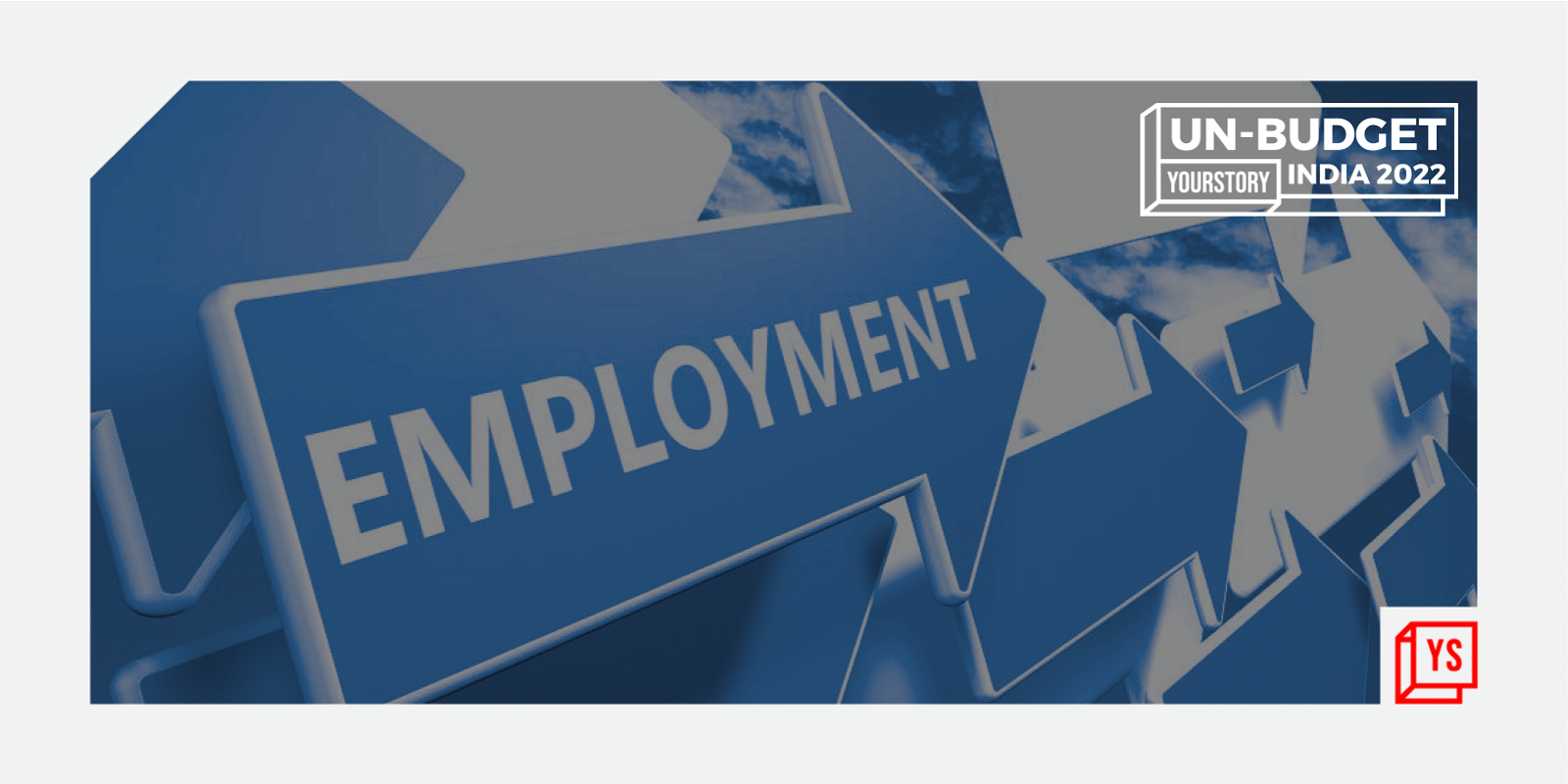The Union Budget 2022 announced by the Finance Minister could perhaps be summarised as one that has showered promising prospects for employment generation and job creation in India.
Investment through PLI scheme for manufacturing, financing of agri startups in rural places through NABARD, requirements for 68 percent of defence spend in domestic market, 5G auction in telecom, as well as Gati Shakti focusing on modern infrastructure are notable highlights that indicate future employment generation.
Further, IT being at the core of many initiatives and data centres getting ‘infra status’ will accelerate and create a host of digital activations across the country, consequentially creating more tech and non tech jobs.
The PLI schemes, as announced in the Budget, have the potential to generate six million new jobs in the next five years, across key sectors such as pharmaceuticals, medical devices, large-scale electronics manufacturing, food products, solar EV modules, automobiles/auto components, EV, textile products and the like.
In this regard, it can be expected that job roles involving assembly, testing, quality, warehousing, packaging and logistics, and supply chain will be supplemented to a large extent.
There are four specific human capital intensive areas that are likely to witness an employment boost. These sectors are largely under the informal segment of employment and include manufacturing, pharma, construction, and textile.
It is expected that there will be more job creation as PLI schemes are turnover-linked incentives, to be approved by investors on meeting specified investment, capacity, and turnover. Given that they offer a simplified approach and many potential benefits, the adoption and popularity of the same is more than likely, in turn fuelling rapid developments.
The 2022 Budget has placed considerable emphasis on the digitisation of several services including access to skilling.
The National Skill Qualification Framework will be aligned with dynamic industry needs, and a new e-portal DESH Stack will be launched, encouraging a digital ecosystem for skilling and livelihood, towards finding relevant jobs and entrepreneurial opportunities. This reinforcement of training and virtual training through a digital platform will give rise to more high skill jobs in terms of content creation and delivery.
The need for skilling has never been more urgent than in the current scenario with the talent crisis. Organisations need to transform their workforce to drive productivity, innovation and growth.
Skilling and upskilling is key, so is anticipating the right skills for future jobs to match current as well as future talent requirements.
Bridging the digital divide of skills is a complex problem that requires all stakeholders to work together, in order to make the county’s workforce more resilient and capable.
The Budget allocation for MSMEs and start-ups has been stated at Rs 6,000 crore for the next five years. MSMEs are considered a strong pillar in the Indian economy, given their considerable contribution to the Indian GDP.
MSMEs are almost equally spread across urban and rural areas and hence quite a popular segment for domestic consumption, exports and most importantly, employment generation.
The sector currently employs 110 million people across the country and this can further accelerate based on fresh allocation of funds over the next five years.
The reduction on import tariffs on inputs and increasing tariffs on end products will lead to a high degree of protection for Indian MSMEs and improve competitiveness in the market.
Further, MSMEs extending ECLGS with focus on hospitality and related enterprises, and the interlinking of various portals for ease of business will lead to more jobs moving from informal to formal employment, which is a heartening move.
Healthcare as an industry has a greatly ambitious growth trajectory moving towards $370 billion, falling in the grid of the top five employment sectors in India. India employs 2.2 million healthcare workers.
It is important to prepare for any public health crises and the Amrit Kaal Budget is focused on increased investment and allocation at the foundational stage, along with additional thrust on R&D and investment. The Union Budget allocation further highlights commitment towards universal access to healthcare through rollout of the National Tele-Mental Health Programme.
All in all, the Budget has taken into account the current state of the economy in the country and accommodated the much-needed boost to employment opportunities across sectors. We look forward to the implementation of said reforms for a better India.
(Disclaimer: The views and opinions expressed in this article are those of the author and do not necessarily reflect the views of YS.)










